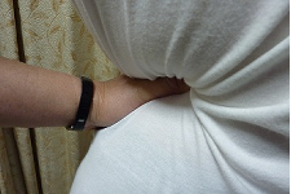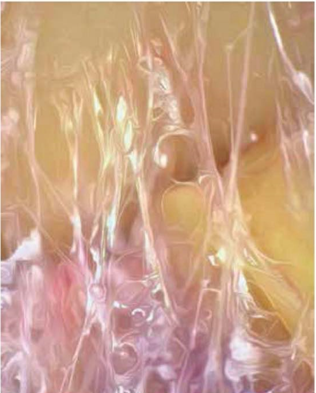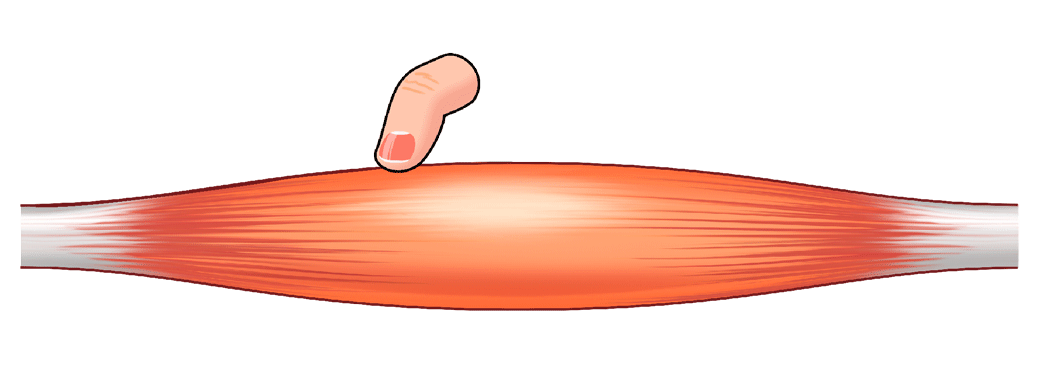Muscle relaxation and "kanshoho"
Explanatory Video
Understanding the Connection: Muscle relaxation and "kanshoho"
“kanshoho” is a technique that allows muscles to relax and achieve a virtually tension-free state without causing any invasive effects or muscle damage.
When muscles are stiff, there are various expressions to describe this condition, including muscle hypertonia, muscle contraction, muscle adhesions (*1), and muscle stiffness(*2).
“kanshoho” can achieve muscle relaxation regardless of the state of muscle stiffness.
(※Excluding congenital pathological conditions like progressive osseous heteroplasia (FOP).)

The stiffness of muscles is primarily governed by two mechanisms related to the muscle’s structure. Calcium is involved in both of these mechanisms.
In reality, there are no precise global standards for muscle stiffness, so let me explain in simpler terms. Muscle tension and muscle contracture occur when the muscle fibers within the muscle cells, known as muscle fibers, are continuously contracting.
Calcium is required for muscle contraction, and conditions like nerve disorders or muscle disorders can lead to an accumulation of calcium within the muscle fibers, preventing calcium from returning to the sarcoplasmic reticulum.
Muscle adhesions and Muscle stiffness occur due to the strengthening of the gelation of the “interstitium (Fascia).”
The term “interstitium (Fascia)” refers to the collagen fibers (fascia), reticulin that binds collagen fibers, and fibronectin produced during muscle injury, among other fibers and gel substances. The adhesion of calcium ions to colloids (colloidal substances) present in the interstitium, or their binding, increases the strength of the gel such as collagen fibers, and also enhances adhesion to other tissues, leading to adhesions.
And it is believed that as gelation becomes stronger and the volume of muscle adhesion increases, it further solidifies.
This can be understood when considering muscle stiffness after muscle injuries.
It’s often referred to as the lump of muscle where “old injuries hurt.”

( source: Robert Schleip , Fascia: The Tensional Network of the Human Body , 2nd edition , Elsevier , 2021)
At the first International Myopain Congress held in Minneapolis, USA, in 1989, one of the proposed morphological common understandings regarding muscle adhesions was the excessive accumulation of local acidic mucopolysaccharides (proteoglycans).
Acidic mucopolysaccharides (proteoglycans) are considered as part of the colloid (gel-like substance) in the interstitium.
Ibrahim SA and colleagues from Egypt have reported that proteoglycans are a major component of the extracellular matrix in animals, where they form large complexes with other proteoglycans, hyaluronic acid, and fibrous matrix proteins (e.g., collagen) (2).
Furthermore, Riley G from the United Kingdom has reported the accumulation of proteoglycans (GAG) in the pathogenesis of tendinopathy. These features are observed in normal tendons as well, so they may not necessarily be pathological. However, it is reported that such accumulations may potentially impact tissue hardening and functional impairment (3).
Based on these observations, it is believed that there is a correlation between the accumulation of proteoglycans, which are part of calcium and the colloid (gel-like substance) in the interstitium, and the development of muscle adhesions and Muscle stiffness. Further research is needed to explore the details and mechanisms of this potential relationship.
In the case of chronic pain conditions like lower back pain or shoulder stiffness, muscles are consistently maintaining their rigidity, which can be described as a form of muscle adhesion or Muscle stiffness.
The distinction between muscle adhesion and Muscle stiffness becomes more understandable when you realize that Muscle stiffness develop when the adhered area (volume) between muscle fibers increases.
As muscle damage in the Muscle stiffness area progresses, the muscle undergoes calcification (4) (*4), The fact that when muscle calcification becomes stronger, the muscle turns into bone (*5), suggests that calcium may also be related to muscle adhesion and Muscle stiffness.
Research on muscle calcification is more common in smooth muscles, such as blood vessels. On the other hand, there is limited literature regarding skeletal muscles, but it is known that calcification occurs in conditions involving injuries or inflammation.
Conditions like “myositis ossificans,” “calcific tendinitis,” “ectopic calcification,” and “ectopic ossification” can be diagnosed using imaging techniques. However, from a muscle tissue perspective, muscle adhesion and Muscle stiffness are considered to be mild states of these disorders.
The development of “kanshoho” involves inducing differences in muscle contraction between muscle fibers, muscle bundles, and muscles by making them perform exercises,by promoting an increase in interstitial fluid and the movement of calcium ions in the “interstitium (Fascia),” it transforms the “interstitium (Fascia)” from a gel-like state to a sol-like state,It was developed to eliminate adhesions between muscles and various other structures such as skin and bone.
As a result, it can effectively reduce Muscle stiffness, including muscle adhesions.

“kanshoho” involves performing a wide range of exercises that create differences in muscle contraction between muscle fibers, muscle bundles, and muscles. In this technique, a spherical object (such as a fingertip) of approximately 1 square centimeter in size is pressed perpendicular to the muscle fibers with a pressure of about 500 gf while the muscle is stretched and contracted to relax it.
As a result, when muscle relaxation occurs, it can be achieved without invasiveness and without causing muscle damage, allowing the muscle to reach an almost tension-free state.
I firmly believe that “kanshoho” is a treatment method that can help alleviate the suffering of individuals dealing with muscle tension, muscle stiffness, muscle adhesions, muscle knots, calcification, and above all, pain and neurological symptoms caused by poor blood circulation.
I encourage medical professionals to consider incorporating “kanshoho” into their practice and join us in saving as many patients as possible from the pain and illnesses they endure. Let’s work together to make a difference in their lives.
(*1) Adhesion refers to the sticking together of organs or tissues that are supposed to be separate, typically due to trauma or inflammation.
(*2) Muscle stiffness is a condition where normally soft tissues become pathologically hardened. Prolonged inflammation or congestion leads to the growth and hardening of connective tissue.
(*3) Acidic mucopolysaccharides (proteoglycans) are protein molecules containing polysaccharides that play a role in protecting cells and cementing cells together.
(*4) Calcification refers to the deposition of calcium salts, particularly calcium phosphate, within tissues.
(*5) Ossification is the process by which non-bone tissue transforms into bone tissue.
(1) Awad EA , HistopatholegicalChanges in Fibrositis.RrictionJR,Awad EM (eds ) Advances in Pain Re−search and Therapy .Ravcn Press ,17 :249 258,1990.
(2) Ibrahim SA et al, Syndecan-1 is a novel molecular marker for triple negative inflammatory breast cancer and modulates the cancer stem cell phenotype via the IL-6/STAT3, Notch and EGFR signaling pathways. Mol Cancer. 2017 Mar 7;16(1):57
(3) Riley G. The pathogenesis of tendinopathy. A molecular perspective. Rheumatology (Oxford). 2004 Feb;43(2):131-42. doi: 10.1093/rheumatology/keg448. Epub 2003 Jul 16.
(4) Micheli A, Trapani S, Brizzi I, Campanacci D, Resti M, de Martino M. Myositis ossificans circumscripta: a paediatric case and review of the literature. Eur J Pediatr. 2009 May;168(5):523-9. doi: 10.1007/s00431-008-0906-8. Epub 2009 Jan 8. PMID: 19130083.